
Haruomi Hosono, sometimes credited as Harry Hosono, is a Japanese musician, singer, songwriter and record producer. He is considered to be one of the most influential musicians in Japanese pop music history, credited with shaping the sound of Japanese pop for decades as well as pop music outside of Japan. He also inspired genres such as city pop and Shibuya-kei, and as the leader of the Yellow Magic Orchestra, contributed to the development and pioneering of numerous electronic genres.
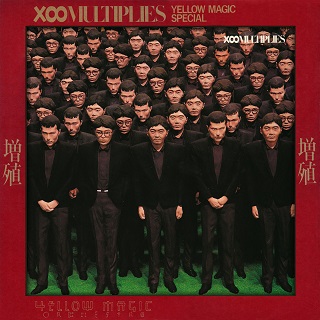
×∞Multiplies is a mini-album and the third studio album by Yellow Magic Orchestra released in 1980. It contains a mixture of songs and instrumentals by YMO, interspersed with comedy sketches. These sketches are performed by Snakeman Show in both Japanese and English, with YMO participating in some of them.
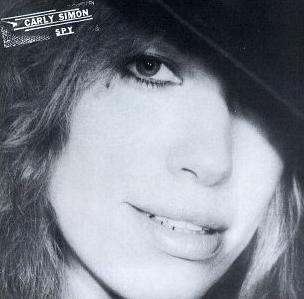
Spy is the eighth studio album by American singer-songwriter Carly Simon, released by Elektra Records in June 1979.

ELO's Greatest Hits Vol. 2 is an album by the Electric Light Orchestra (ELO), released in 1992 as a follow-up to their more successful ELO's Greatest Hits, though it was not issued in the U.S.

Hasten Down the Wind is the seventh studio album by Linda Ronstadt. Released in 1976, it became her third straight million-selling album. Ronstadt was the first female artist to accomplish this feat. The album earned her a Grammy Award for Best Pop Vocal Performance, Female in 1977, her second of 13 Grammys. It represented a slight departure from 1974's Heart Like a Wheel and 1975's Prisoner in Disguise in that she chose to showcase new songwriters over the traditional country rock sound she had been producing up to that point. A more serious and poignant album than its predecessors, it won critical acclaim.
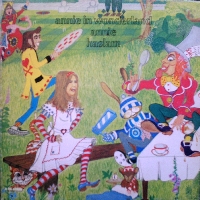
Annie in Wonderland is the first solo album by Annie Haslam, vocalist with the 1970s band Renaissance. It was produced by Roy Wood, who also wrote some of the material, arranged all the songs, played nearly all of the instruments, and illustrated the cover. The album features a range of musical styles enabling Haslam to experiment with vocal styles outside the ethos of Renaissance. The range for which Haslam is well-known is still apparent, however, especially in the showcase number "Rockalise". The album peaked at No. 167 on the Billboard "pop albums" chart.

No Ordinary World is the seventeenth studio album by Joe Cocker, released on 8 October 1999 in Europe and on 22 August 2000 in USA. The US edition of the album features two bonus tracks and has different cover artwork. Notable songs on the album include a cover of Leonard Cohen's "First We Take Manhattan" and "She Believes in Me" co-written by Bryan Adams, who had also provided backing vocals for the song.

The Gist of the Gemini is the fourth studio album by Italian-Canadian singer Gino Vannelli. The album was released in 1976 and was produced by Gino and his brother Joe Vannelli, together with Geoff Emerick.

UC YMO: Ultimate Collection of Yellow Magic Orchestra is a compilation album by Yellow Magic Orchestra. The songs were selected by keyboardist and pianist Ryuichi Sakamoto. The album was also released as a premium edition. The premium edition came with a long-sleeved white shirt emblazed with the yMo logo as well as a yMo bandana that the band wore on the 1980 world tour 'From Tokio to Tokyo', along with a special Liner Notes Booklet and an autographed print by drummer and sometimes singer, Yukihiro Takahashi. It was cataloged as MHCL 291-4 and sold in Japan for 21,000 yen.
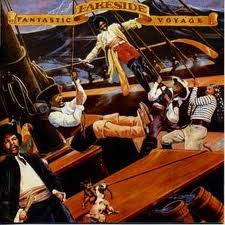
Fantastic Voyage is the fourth album by the funk band Lakeside, released in 1980 via SOLAR Records. It was produced by the band. The album has sold over a million copies.

Make Your Move is the fifth album by the American duo Captain & Tennille. Released in 1979, the album includes the #1 hit single "Do That to Me One More Time". The album was certified Gold by the RIAA. It is their first album on Casablanca Records.

Cobalt Hour, stylized as COBALT HOUR, is Yumi Arai's third studio album, released on June 20, 1975 by Toshiba EMI/Express. The album was also distributed by Alfa Records for a period of time, as Alfa also held ancillary rights to this and the other LPs Arai released during the time Alfa was still a publishing company; those rights later reverted to EMI Japan in 1994-thereabouts, when EMI regained distribution of Alfa's catalogue except for the artists who were published by Alfa and were distributed by other labels. On April 26, 2000, the recording was digitally remastered for re-release on CD by Bernie Grundman. Internet sales of the album began March 10, 2005.

Hosono House is the debut solo album of Japanese musician Haruomi Hosono, released on May 25, 1973.

Bon Voyage co. is Haruomi Hosono's third solo album. This album continues the tropical style of Hosono House and Tropical Dandy while showing influence from the music of New Orleans and also features performances from Tin Pan Alley and Happy End. The album's Japanese title was influenced by a Nagasaki convenience store of the same name that Hosono met while on Tin Pan Alley's "First & Last Concert Tour". This album was re-issued as part of a box set with the single version of the Tropical Dandy song "Peking Duck" and an interview Hosono gave on a Tokyo Broadcasting System radio show.

Paraiso is Haruomi Hosono's fourth solo album and Yellow Magic Band's first album. This album continues the tropical style of Hosono House, Tropical Dandy and Bon Voyage co., while being influenced by the music of Hawaii and Okinawa, incorporating electronic sounds that would be later developed on Hosono's and YMO's careers. YMO, The Yellow Magic Band at this point in time, was composed of Tin Pan Alley members and studio musicians, such as Hosono's former Happy End bandmate Shigeru Suzuki and future YMO members Ryuichi Sakamoto and Yukihiro Takahashi, as well as guitarist Hirofumi Tokutake.

Saravah! is the debut solo studio album by Japanese multi-instrumentalist Yukihiro Takahashi. Named after Pierre Barouh's record label of the same name, Takahashi conceived the album during his tenure on The Sadistics. The album is based on French pop music, and would later show up on early Yellow Magic Orchestra material. Besides Takahashi, this album features performances by members of The Sadistics, YMO and Tin Pan Alley. Due to the album being made before YMO members started using computers, Sakamoto got involved in arranging the music; all the keyboard parts on the album are dubbed instead of sequenced.

Far Skies Deep Time is the first official studio EP by the English progressive rock band Big Big Train. It was released in 2010 by English Electric Recordings, and re-released in 2011 with "Kingmaker" replacing "Master of Time" as the first track. It contains five tracks, including a 17-minute epic about the last voyage of Belgian singer Jacques Brel.

Band Wagon is the 1975 debut solo album of Japanese musician Shigeru Suzuki recorded with musicians from Los Angeles. Two singles were released from the album "The Smell of August"/"Snow Express" and "100-Watt Lover", both in 1975.

Murdered by the Music, also known as Ongaku Satsujin in Japan, is the second studio album by Japanese multi-instrumentalist Yukihiro Takahashi, released on June 21, 1980 by Seven Seas via King Records. Murdered by the Music was release whilst Takahashi was an active member of the Yellow Magic Orchestra. As well as his YMO bandmates Ryuichi Sakamoto and Haruomi Hosono, and longtime YMO collaborator Hideki Matsutake, the album also features contributions from Sandii and Makoto Ayukawa of Sheena & the Rokkets.
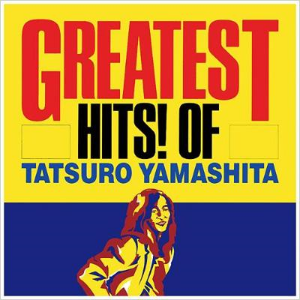
Greatest Hits! of Tatsuro Yamashita is the first greatest hits album by Japanese singer-songwriter Tatsuro Yamashita, released in July 1982.




















